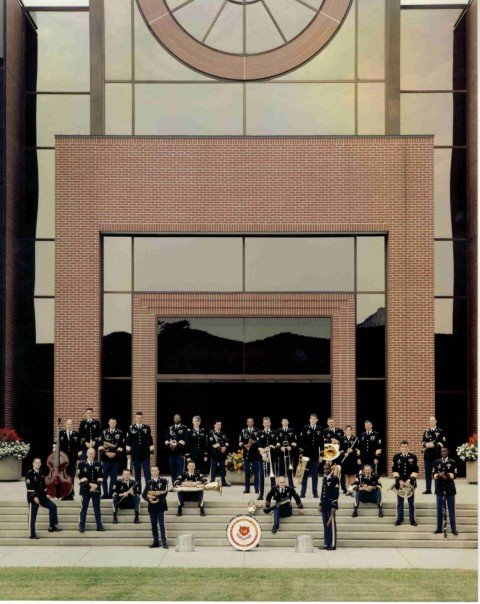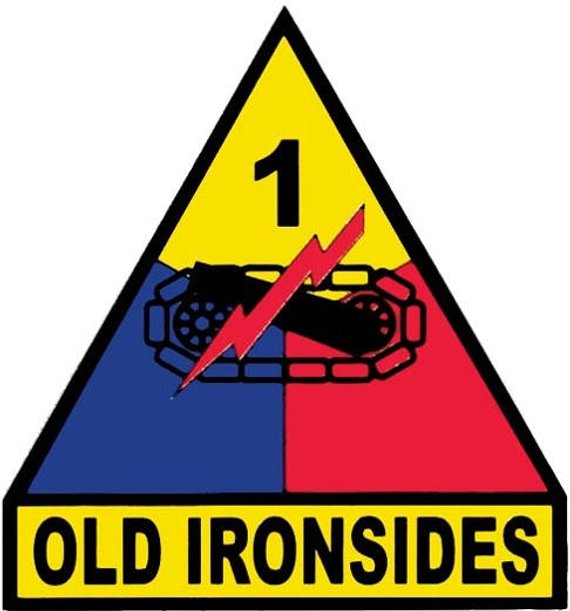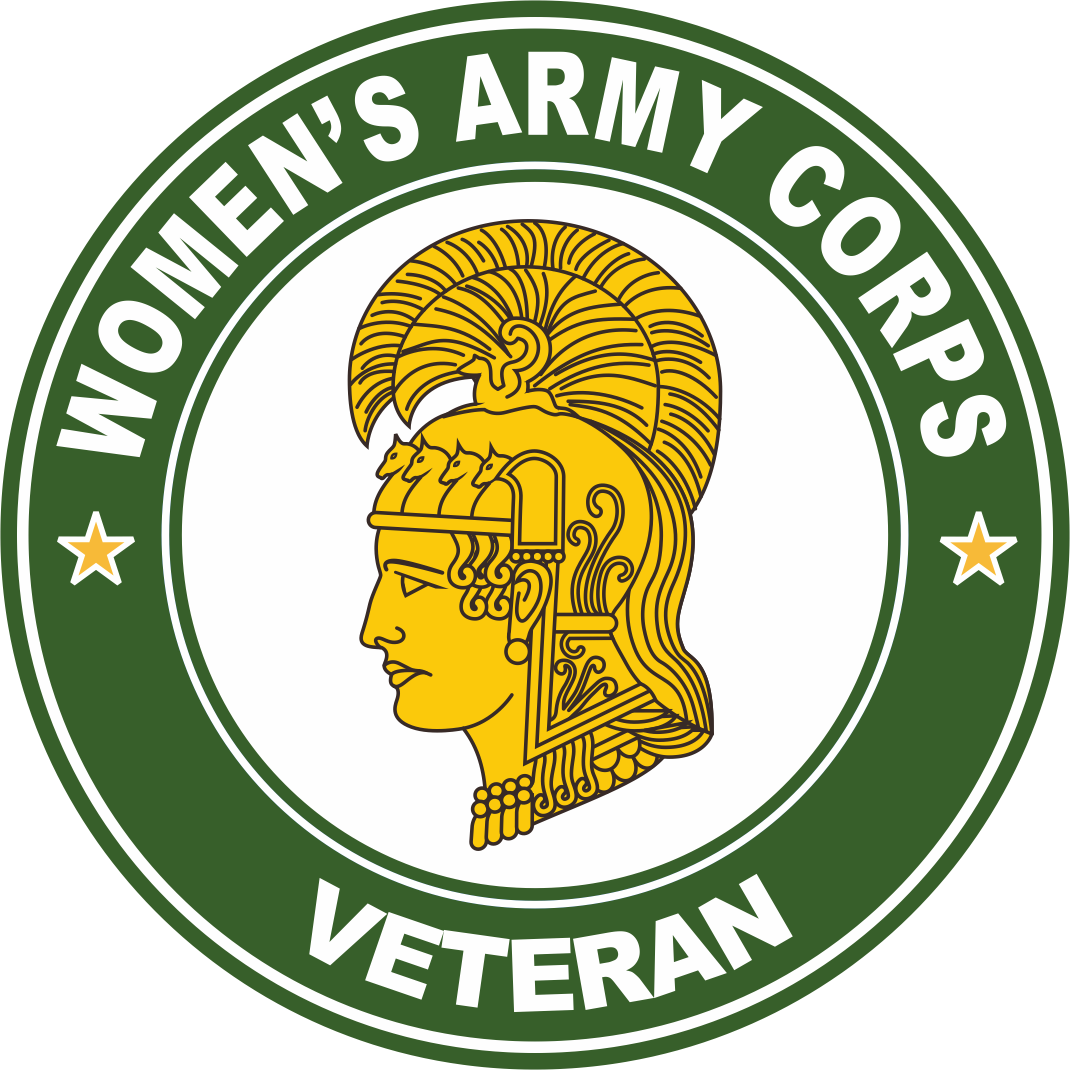SOME OF OUR CURRENT WORK
TWO HISTORIC MILITARY JAZZ CONCERTS
FACULTY LAB BAND: In March of 1993 the Armed Forces School of Music presented “The Thirty-Seventh Annual All-Eastern Band and Instrumental Clinic” at the base theater on the US Naval Amphibious Base (Little Creek). Picture quality is crap but the sound is decent. This is the last concert I performed with the Armed Forces School of Music Faculty Lab Band jazz ensemble under the direction of Maurice Williams, Jr. This is the tightest jazz ensemble big band I have ever played with still to date. (This video is embedded to play here as well as on YouTube.)
ABOUT
This video presents the School of Music Faculty Lab Band jazz ensemble concert featuring guest artist Dr. Jerry Coker. https://en.wikipedia.org/wiki/Jerry_C…
Master Warrant Officer Maurice Williams, Jr. (former director of The Army Blues, Washington DC https://www.usarmyband.com/blues/the-…) was the leader and director.
PROGRAM
00:00:20 “Groove Merchant” by Thad Jones 00:06:30 “Reverie” by Mike Tomaro 00:14:40 “Sambop” by Bryan Kidd 00:21:03 “In A Mellow Tone” by Duke Ellington, arr. Frank Foster 00:28:45 “Blues 1, Band, 0” by Mike Tomaro 00:37:20 “Cruisin’ for a Bluesin'” by Peter Blair 00:44:30 (w/ Dr. Jerry Coker) “Silly Little Grin” by Mike Tomaro 00:52:02 (w/ Dr. Jerry Coker) “Papa Lips” by Bob Mintzer 00:58:55 “Things Ain’t What They Used To Be” by Mercer Ellington
MUSICIANS
Conductor and Musical Director: MWO Maurice Williams, Jr.
Guest Artist: Dr. Jerry Coker
Reeds: James B. Nesbit, USA (lead); Christopher Burnett, USA (alto); Keith Philbrick, USA (jazz tenor); Aaron Hill, USA (tenor); Ramon Evans, USMC (bari)
Trombones: (left to right) Bruce Patterson, USMC; Joe Dolsak, USN; Fred Birt, USA; Mike Van Winkle, USA; unknown, USA
Trumpets: (left to right) Blake Wallace, USN; Andy Omdahl, USMC (lead); Rob Dedominick, USN (lead); unknown, USN; Douglas Forziati, USN
Rhythm: Jeff Barnes, USA (piano); Maxie Smith, USA (guitar); Bruce Malone, USA (bass); Monte Pursifull, USA (drums); Dale Yeager, USN (vibes); Diane Beegle, USN (vox)
NOTE: The video picture quality is low-res, but the audio quality is good.
NATO Jazz Ensemble “ALLIANCE” Commander In Chief, Allied Forces Southern Europe: Debut and Pre-tour concert at the AFSOUTH Base Theater Bagnoli, Napoli, Italia (February 1991)
ARTISTS
Erick Borling, jazz trumpet (US Navy)
Gerry Engwis, trumpet (US Navy)
Al Miller, trumpet (US Navy)
Steve Slater, lead and jazz trombone (US Navy)
Perry Frank, trombone (US Navy)
Paul Carmichael, jazz tenor, and clarinet (US Navy)
Christopher Burnett, lead and jazz alto, unit leader (US Army)
Savvas Gritzelis, alto (Greek Army)
Andy Reisinger, bari (US Navy)
Dave Dorris, piano (US Army)
Joe Irwin, bass (US Air Force)
Stan Swann, drums (US Air Force)
Gary Alston, vox, emcee, and tour translator (US Navy)
SHOW PROGRAM AND MUSICAL SELECTIONS
00:32 “Nica’s Dream” (Horace Silver, arr. Burnett) 02:38 “Late Night Theme” (Paul Shafer) 06:45 “Tribute To The Duke” (Duke Ellington arr. Nestico) 12:55 “Easy” (Al Jarreau / Tom Canning / Jay Graydon arr. Burnett) 16:44 On Broadway (Barry Mann / Cynthia Weil / Jerry Leiber / Mike Stoller) 19:57 Over The Rainbow” (Harold Arlen) 24:40 American Stand Up Comedy Routine by Dave Dorris NOTE: The jazz standard “Old Devil Moon” (Burton Lane arr. Nestico) was also on this program but not shown on the video here. Thanks to Savvas for the video!
HISTORY: WE STARTED OUR PROFESSIONAL MUSIC CAREERS WITH THE US MILITARY BANDS SYSTEM AND MET IN GERMANY.

INTRODUCTION
399th is largely written in the narrative voice and from the perspective of Christopher L. Burnett. However, it must be noted that Terri Anderson Burnett also served honorably and with distinction for five years as a musician in the Army. She was also one of the very last members of the Women’s Army Corps to transition into the gender-integrated force that included men and women serving together as well.🇺🇸🎵
It is ultimately more convenient to direct our friends, colleagues and associates to this page on our website for them to learn about our military music career and history than to continually describe small segments repeatedly to curious individuals out of context of the whole story.
PHOTO: We think this was from a Belgium Tour where we stayed in one of their military installations. We are seated in the front “jump seats” of our tour bus. (Photo was taken by a band colleague and trombone player named, Bob Levitsky)
This essay with images, multimedia, and active hyperlinks represents a relatively brief overview of what our family’s life together was like during some of the highlights of our 22-year military music career history. Of note is the sheer number of performances that military bands did during our era. We performed between 250 to 400 musical commitments every year. After the first two years of doing that much work, you get over yourself and the typical lust of being on stage pretty quickly. Lots of two or three gigs each day some weeks.

Photo: Neuschwanstein Castle in Hohenschwangau GERMANY aka the “Disney Castle” was among the many places we saw touring around Europe while we were with the band in Ansbach.
Since we have been out of the military music system and have been engaging the civilian professional music scene at-large, we’ve found that most artists do not play as much as we did in the military. Most civilian musicians will typically perform between 50 to 150 musical commitments per year. And most don’t even work at that pace for 20+ years because there typically isn’t that much work for everybody – especially jazz artists. Outside of the military bands, it seems that the professional jazz artists like Pat Metheny who actively tour 200 days a year are the exception.

PHOTO: Our primary touring ride during my era with the NATO Band in Italy was the C-9B Skytrain: a military version of the McDonnell Douglas DC-9-32 airliner. Modified with upper cargo doors, the C-9 provides unique logistics capabilities, particularly airlift personnel to and from training sites and the movement of naval personnel to support ship deployments. The C-9 can haul cargo, passengers, or a combination of the two. Beginning in 2001, the C-40A aircraft began replacing the C-9.
PHOTO: The bus we obtained while Fred Schouten was Supply Sergeant with the BIG RED ONE band in 1974. BRO was my very first band assignment. I was originally slated to go to the Army Band at Fort Leavenworth, Kansas which was closer to my home in the Kansas City metropolitan area, however, that band was eliminated in the Vietnam-era reduction in forces. This Diesel engine workhorse was the typical bus that military bands used for most on-post and local performances that were within a 50-mile radius of our home base. We called it the “white elephant.”
NAVIGATION MENU
The primary sections on this page include:
“399th”
The First CD Recording
Historical Context
Post Military Music

We hope you enjoy reading about our adventures.
And, we hope our children and grandchildren enjoy learning about some of our family’s history.
Sincerely, The Burnett Family, est. 1979
PERIOD: The Burnett Family served on Active Duty Regular Army status for over 22 years – July 1974 to October 1996.
//START//
399th: “An essay highlighting our early life together and our ultimate family career serving as professional military musicians”
PHOTO: This is a “Letter of Commendation” from the Enlisted Student Company Commander at the Armed Forces School of Music for my work as a Squad Leader (and acting Corporal) while still only a Basic Course (COI 450-F1) Student. I have been an actual working professional musician since 1975.
PHOTO: At the Armed Forces School of Music (1975) as a 450-F1 Basic Army Bandsman Course Student and Squad Leader shown here with a fellow squad leader from Craig Moody’s platoon named Tim Ross (French horn) after the weekly field night while getting uniforms ready and polishing boots.
My favorite overall assignment was the Armed Forces School of Music where I served four times as a student and once on the Faculty and Staff as the First Sergeant of the Army Element’s Student Company which included 400 students at the time.

PHOTO: With two significant military leaders and musical mentors – O’tress L. Tandy (far left) and Ralph J. Nelson (far right) the command team at the 399th US Army Band circa 1984 in front of the old Post Headquarters at Fort Leonard Wood.

PHOTO: ARMED FORCES SCHOOL OF MUSIC FACULTY FAREWELL shown L – R are Captain Bill Garlette, First Sergeant Christopher Burnett, Sergeant First Class Luis Branch, at the Little Creek Naval Amphibious Base in Virginia, April 1993.
All of my military band assignments were very good musically. My favorite band assignments were (1) the NATO Band at Naples, Italy *YouTube video, (2) the First US Army Band in the Military District of Washington at Fort Meade, Maryland, and (3) the 399th US Army Band in Missouri.

PHOTO: My favorite military band assignment was working for the US Navy Music Program at the Commander-In-Chief Allied Forces Southern Europe (NATO) Band, Naples, Italy. The best musical leaders I worked for in a career of great band assignments were Manuel Constancio (pictured here promoting me) and Al Monaro. They let me work to my abilities and capacity. My military career went to another level of success and after that assignment, I went directly to a post as the First Sergeant of the Army’s Student Company on the Staff and Faculty at the Armed Forces School of Music, our career proponent school.
PHOTO: Playing a combo gig with our Assistant Director, Al Monaro at Villa Nike shortly after I arrived on the band (see my old unit patch from the Army’s Engineer Center Band). This was the best military band assignment of my career (1990-1992) and my assignments at the Armed Forces School of Music were the overall favorites of my career. So, perhaps I should have joined the Navy? Nahhhh…

PHOTO: First US Army Band JAZZ ENSEMBLE in the Military District of Washington at Fort George G. Meade, Maryland was a very fine professional large jazz ensemble that toured lots on the US east coast and gave educational clinics at schools as well.

PHOTO: From our Media and Press Kit photo shoot of the 399th US Army “Engineer Center” Band at Fort Leonard Wood in Missouri shortly before I retired.

PHOTO: This photo was taken in June of 1980 by Terri’s mom Sintha when they visited us in Germany before we returned home to the USA to be assigned with the First U.S. Army Band at Fort George G. Meade in the Military District of Washington.
We also loved living in Germany where we met while touring Europe with the Army band based at Ansbach at the time. There’s nothing like the experience gained from actually living and working overseas as a musician. We had very good assignments. I became a qualified professional musician, businessman, and leader due to the opportunities afforded by military service.
MORE PHOTOS: “Favorite Military Assignments Gallery”
(399th commentary continues after gallery …)


PHOTO: The above two photographs by the division Public Affairs Office were taken during the rehearsal of our U.S. 1st Armored Division jazz band directed by my group leader, Sergeant First Class Charlie Heintz with the Hof Symphony in Germany. I was still just 23 years old and a soloist.

PHOTO: The only time I played the jazz tenor saxophone chair during my military career was with the First US Army Band. The jazz band was directed by my group leader, Sergeant First Class Jim Hickerson (far right standing and playing the baritone saxophone) and it was a very good band that toured often.
“399th” continued …
PHOTOS: (1) Terri in the recording studio with Freda, Sam, and Aryana at a session for the (2) CbQ standards album to be released worldwide in January 2021 on the ARC label. (Both pictures were taken by WM Thornton of JBT Studios in Kansas City.)
We were officially assigned with the 399th U.S. Army Band at Fort Leonard Wood, Missouri from 1983 until 1990 and then from 1993 until 1996. However, the three-year break was when I went on unaccompanied assignments to the NATO Band in Italy and the Armed Forces School of Music Staff and Faculty concurrently before returning to the 399th as the Enlisted Bandleader. I say “we” because military families are a “we” when it comes to careers – you can’t be successful in anything without the support of your family. Mine was great!
Based upon the above assignment dates, you can see that we spent ten of my 22 years of service with the 399th. I met Mr. Tandy and Sergeant Major Nelson at the Armed Forces School of Music during the annual “All-Eastern Band and Orchestra Clinic” that was once held there for many years. The military has since merged with the Midwest Clinic and no longer holds its own independent event. I was there to attend the advanced courses and had been accepted and enrolled in the warrant officer bandmaster course.
PHOTO: With Terri and one of her students after the Flute Choir Concert, University of St. Mary (2019)
I didn’t complete the course to become a warrant officer bandmaster so I was available to return to duty as a musician in a band. I was scheduled to go to the nearby US Army Training and Doctrine Command Band which was one of the special bands then and posted at Fort Monroe. However, Tandy and Nelson approached me about coming to work with them at the 399th.
It turned out to be one of the best decisions of my life and career. And, I was able to use all of the training and skills I’d developed – conducting, performing, arranging, composing and leading musicians. When I went to the NATO Band (1990-1992) many years later, all of the experience gained at the 399th came in handy and resulted in my leading the major ensembles of that particular band.

PHOTO: Cb Ink Sketch by David Terrill (2020)
Anyway, the 399th U.S. Army Band of this era toured an 8-state region of the midwest United States with our concert wind ensemble, large jazz ensemble, and rock band groups. Our family lived in the Missouri Ozarks for nearly 18 years – including finishing our military career then immediately opening (and subsequently closing) a music store business in that community prior to finally leaving and returning to be based permanently in my native home of the Kansas City metropolitan area, post-military career.
Tandy and Nelson left the 399th in 1985 and we almost left as well. I had been accepted to go to the U.S. Military Academy Band at West Point, New York because I had been selected to play in their large jazz ensemble, the Jazz Knights. It was a great potential opportunity – former members include musicians like alto saxophonist, Vincent Herring.
PHOTO: Subsequent Enlisted Bandleader, First Sergeant Irving Moore, Jr. conducting the 399th Army Band at the capital rotunda in Jefferson City, Missouri after the Tandy and Nelson Era, circa 1986. I was a Sergeant First Class playing clarinet and seated in the first chair of the first row on the right.
But, I didn’t get released by the new commander to go to that assignment because he and the enlisted bandleader wanted to keep me at the 399th – which really suuuucked. Looking back I can objectively say that was an example of poor leadership on the part of my command team then. I learned from it and have never forgotten how ironic it was to in effect be punished for doing a good job.
I have experienced that such things as this only make you a better person and artist. You need both good and bad for balance in life. I also learned to be a better military leader, mentor, and company manager because of poor leaders and negative situations like that one. What goes around usually comes around.
MORE PHOTOS: “Favorite Military Assignments Gallery”
(399th commentary continues after gallery …)

PHOTO: I was the official Conductor of the NATO Ceremonial Band during all dignitary honors ceremonies held at the Headquarters of Allied Forces Southern Europe. I’m pictured here after a ceremony speaking with the Commandant of the Royal College of Defence Studies, General Sir Antony Walker. Looking on is Admiral Jonathan T. Howe, who actually served simultaneously in the two positions as Commander in Chief, of Allied Forces Southern Europe and Commander, of U.S. Naval Forces Europe.Admiral Howe would later serve as Ambassador to Somalia after he retired from the Navy. (1991, Italy)

PHOTO: Leading the NATO Ceremonial Band during all dignitary honors ceremonies held at Headquarters of Allied Forces Southern Europe.

PHOTO: I was the official Conductor and Leader of the NATO Big Band and Show Band “Alliance” which conducted concerts and tours across Europe and the Mediterranean area. (This photo was taken by public affairs on my last tour during a street concert at Carnival in Nice, France.)
SCHOOL OF MUSIC LOGO – I attended all of the courses offered at the Armed Forces School of Music during my career and also served on the Staff and Faculty as well. (This was the Armed Forces School of Music’s official seal during our era.)

PHOTOS: 1982 ARMY ENLISTED BANDLEADER COURSE 02Z5 GRADUATES WHO MATRICULATED INTO THE 1983 WARRANT OFFICER BANDMASTER COURSE 42R – I attended all of the courses offered at the Armed Forces School of Music during my career and also served on the Staff and Faculty as well. The top photo is of the 1982 Army Enlisted Bandleader Course (COI# 450-02Z50) class. The bottom photo is a picture of me at the SOM used in an Army magazine.

PHOTO: I was a First Sergeant assigned to the Armed Forces School of Music where I also played in the Faculty Lab Band jazz ensemble and the Faculty Concert Band wind ensemble. I also played in recitals too. This photo is of an intermediate course graduation.
MY NATO ID CARD STORY

“GRATITUDES – Musings In Cb” // This is a photograph of my NATO ID card from when I served with the Commander In Chief Allied Forces Southern Europe (NATO) Band at Naples Italy. Since it lived in my wallet and inside my pocket, this ID card was actually pristine when I finished that tour of duty in 1992, as well as when I concluded my entire 22-year active duty military career in 1996. The reason it became so tattered is that I gave it to our son, Micah to carry with him when he was deployed and served in combat. He carried it with him the entire time. In 2003, Micah deployed to Iraq with the 173rd Airborne Brigade. He received the Bronze Star Medal with Valor device for his exemplary heroic combat service. Yes, he was in the real stuff.
The Second Battle of Fallujah—code-named Operation Al-Fajr (Arabic: الفجر “the dawn”) and Operation Phantom Fury—was a joint American, the Iraqi government, and British offensive in November and December 2004, considered the highest point of conflict in Fallujah during the Iraq War. It was led by the U.S. Marines and U.S. Army against the Iraqi insurgents in the city of Fallujah and was authorized by the U.S.-appointed Iraqi Interim Government. The U.S. military called it “some of the heaviest urban combat U.S. Marines and Soldiers have been involved in since the Battle of Huế City in Vietnam in 1968.”
Micah brought my NATO ID card back home to me as he promised he would. After his time in service, he went back to college, finished a double major, and now serves in a job that helps vets. They tell me he’s a superstar. I was a musician in the band my entire career and never came close to combat duty. My son is a true war hero. I love him very much and I’m very proud to be his father. We have lots to be thankful for as a family. All four of us are military veterans, our son is a combat hero and our daughter was the very first commissioned officer in the history of our entire family. That’s cool. We are grateful as people, parents, and grandparents. SALUTE!
“399th” continued …
Considering everything good and bad, I made the senior enlisted rank of Sergeant First Class (E7) with only 8 years in service and ultimately retired in one of the most senior positions as a First Sergeant (E8). So, I served 14 of my total of 22 years in military service as a senior leader and boss. Not bad for a sax player from Paola, Kansas who had initially joined the Army with the simple goal of becoming a master musician and artist.

When I returned to the 399th for my final assignment in 1993, we were able to build a top-notch organization with superior musical products and quality personnel. We recruited great musicians, many who went on to lead military music at the highest levels from the Washington DC bands to the proponent agencies that create doctrine. So, it was very successful.
We also made the first actual compact disc digital recording by the 399th in 1995, which was literally the second recording ever made by that band. The band had recorded a vinyl LP under a previous command team and has likely made other recordings in the decades since.
The music posted here is available for free streaming and is from that first CD, “Essayons (Let Us Try).”
DEDICATION
I dedicated the jazz ensemble selections on the recording to a couple of my mentors: Sergeant Major Ralph Jay Nelson, who was retired and still lived in that area at that time; and, the first Master Warrant Officer for Army Music, Maurice Williams, Jr., who was the immediate former leader of the Army Blues Jazz Ensemble in Washington DC when he directed our Armed Forces School of Music Faculty Lab Band I performed with during my assignment there.

PHOTO: “Sound Trek” was the large jazz ensemble of the 399th U.S. Army Band, directed by Sergeant Major Ralph Jay Nelson. I played lead alto.
I have ultimately modeled how I rehearse, direct, develop and administrate the programming of a large jazz ensemble after both Maurice Williams, Jr. and Ralph Jay Nelson.

399th US Army (Engineer Center) Band.
I’m in the center.

ESSAYONS, (Let Us Try), 1995 CD
ESSAYONS
(Let Us Try)
INFORMATION: “Essayons (Let Us Try)” was recorded and published on compact disc in 1995 by the 399th Army (Engineer Center) Band, Chief Warrant Officer Jeanne Pace, and First Sergeant Christopher Burnett – command team and producers. Essayons is French for “let us try” and the motto of U.S. Army Engineers.
HISTORICAL NOTE: US Army General, Joe N. Ballard, was executive producer and the Commanding General of the US Army Engineer Center and Fort Leonard Wood in 1995. CWO Jeanne Y. Pace was our Band Commander and Principal Conductor. Ms. Pace was a senior bandmaster at that time and went on to lead the Old Guard Fife and Drum Corps in Washington DC after the 399th. She was also the first-ever female Army warrant officer bandmaster in history. We had first met as fellow enlisted students during the Enlisted Bandleader (COI# 450-02Z50) course at the Armed Forces School of Music in 1982. We worked well together as a command team at the 399th.
The 399th was our family’s very last active Regular Army post and military band assignment, I served as the unit’s First Sergeant and Enlisted Bandleader. I also directed the award-winning large jazz ensemble, practiced every day, and played woodwinds in the band.
The 399th Army Band is part of the Buffalo Soldiers of the 9th and 10th Cavalry units lineage, further validation of the fact can be found in the following research dissertation – The Organizational and Unit History of the 399th Army Band by Dana Douglas Harris.
Our edition of the “399th” was a top-notch Army band. After a couple of decades this recording remains a professional and historic representation of military bands. Salute.
Established 1 July 1973, the United States Army Training and Doctrine Command (TRADOC) is a command of the United States Army and is now headquartered at Fort Eustis, Virginia. It is charged with overseeing training of Army forces and the development of operational doctrine. TRADOC operates 37 schools and centers at 27 different locations. TRADOC schools conduct 1,304 courses and 108 language courses. The 1,304 courses include 516,000 seats (resident, on-site and distributed learning) for 443,231 soldiers; 36,145 other-service personnel; 8,314 international soldiers; and 28,310 civilians.
Our edition of the 399th also received top marks during the Annual Technical Inspections during our command tenure. These inspections assessed TRADOC bands on the quality of musical training; technical proficiency; adequacy of equipment, personnel manning, and facilities; effectiveness of command and control; and utilization of the band in tactical environments, in accordance with the Army Regulation for Army Bands, AR 220-90 (now obsolete).
The National Federation of Music Clubs (NFMC) is an American non-profit philanthropic music organization that promotes American music, performers, and composers. NFMC endeavors to strengthen quality music education by supporting “high standards of musical creativity and performance.” NFMC headquarters are located in Greenwood, Indiana.
My composition “Daedalus” was named the 1995 5-STAR AWARD OF MERIT WINNER by the National Federation of Music Clubs. The Engineer Center Jazz Ensemble was named the 1995 4-STAR AWARD OF MERIT WINNER by the National Federation of Music Clubs. The second highest prize that year. Objective validation.
GUIDON – This commercial enterprise newspaper is an authorized publication for members of the U.S. Army. Contents of the GUIDON are not necessarily official views of, or endorsed by, the U.S. government, the Department of Defense, the Department of the Army, or the U.S. Army Maneuver Support Center of Excellence and Fort Leonard Wood. It is published weekly using photo-offset reproduction by the Public Affairs Office, U.S. Army Maneuver Support Center of Excellence, and Fort Leonard Wood, Fort Leonard Wood, Mo. 65473.
And, elements of the 399th U.S. Army Band won the top two prizes in 1995 from the National Federation of Music Clubs in the Parade of American Music category for military bands. I won the top prize (5-star award of merit) and the Engineer Center Jazz Ensemble won the top performing group honors (4-star award of merit).

HISTORICAL FACT: The “Essayons (Let Us Try)” compact disc recording is the very first modern-era digital recording produced in the history of the 399th Army Band and was the second overall. In the era of the 21st Century Internet it is not necessary for the regional military bands to produce recorded albums for posterity and recruiting. Social media websites allow bands to reach the public more effectively.
LISTEN
CEREMONIAL MARCHING BAND 1995
CWO Pace, conductor
01|US National Anthem – F Key
02|Essayons – J Johnston
CONCERT WIND ENSEMBLE 1995
CWO Pace, conductor
03|December 7, 1941 – J Ployhar
SFC Hervieux, narration | SSG Dorris, FDR speech excerpt
04|The Cowboys – J Williams
JAZZ COMBO 1995
SFC Parks, leader + trombone
05|I Could Write a Book – Rogers and Hart
SSG Kippola, piano
SSG Shanks, guitar
SSG Rhoads, vox, bass
SPC Sadler, drums
BRASS ENSEMBLE 1995
06|The Pink Panther – H Mancini
WOODWIND QUINTET 1995
07|WW Quintet Mvt 1 – A Deslanderes
SPC Rhoads – flute
SSG Wagaman – oboe
SGT Safely – clarinet
SGT Labonov – horn
SFC Baldwin – bassoon
08|WW Quintet Mvt 2 – A Deslanderes
SPC Rhoads – flute
SSG Wagaman – oboe
SGT Safely – clarinet
SGT Labonov – horn
SFC Baldwin – bassoon
GUITAR/FLUTE DUO 1995
09|Music aus Italien – F Barscenti
SSG Ferris – flute
SSG Shanks – guitar
10|Tango – I Albeniz
SSG Ferris – flute
SSG Shanks – guitar
ENGINEER CENTER JAZZ ENSEMBLE* 1995
1SG Burnett, conductor
11|St Thomas – S Rollins
1SG Burnett, piccolo (section double)
SSG Heron, soprano saxophone (section double)
SFC Parks, trombone
12|The Heart of the Matter – B Mintzer
SFC Ellis, director of introduction and coda sections
SGT Risk, tenor sax
1SG Burnett, alto sax
13|Daedalus – C Burnett*
SSG Dorris, piano
SSG Rhoads, bass
14|Groovin Hard – D Menza
SGT Schrantz, trombone
Saxophone Section, soli:
1SG Burnett, lead
SSG Heron, alto
SGT Risk, jazz
SPC Loken, tenor
SSG Luther, bari
CONCERT WIND ENSEMBLE 1995
CWO Pace, conductor
15|Duty, Honor, Country – MacArthur, Cook and Walters
SFC Hervieux, narration
16|The Army Goes Rolling Along – Gruber, Bryden, and Danford

PHOTO: The last edition of the “ENGINEER CENTER JAZZ ENSEMBLE” circa 1996; directed by First Sergeant Christopher L. Burnett from 1993-96.*
THE END OF OUR MILITARY CAREER
One day during my normal run at the end of the day with a couple of my senior sergeants, I just stopped running. Not because I was tired or injured – I was done. I walked directly over to the Personnel Administration Center building next to the Band Hall, called to let Terri know what I was doing, and then submitted my Military Retirement Request on DA Form 4187. I went to the Band Hall and told Ms. Pace of my decision.
It was time for me to move on as a musical artist and leave the “nest” of Army music. I knew that if I stayed much longer, I would end up being primarily an administrator and lose the high level of musicianship I’d worked so hard to achieve. I had been all I could be as a musician in the Army.

PHOTO: First Sergeant Christopher L. Burnett being presented with an Army Meritorious Service Medal and his Army Retirement Certificate by the Army Engineer School Commandant Major General Clair F. Gill, who also served concurrently as the Commanding General of the US Army Engineer Center and Fort Leonard Wood in October 1996.

PHOTO: We opened and closed The Burnett Music Company, Inc. 1996-2001, St. Robert, Missouri after our military career.
So, I finished my military career in 1996. Our family would open then subsequently close a retail music store business in the Fort Leonard Wood area before moving back home to the Kansas City area where I was able to finally establish myself as a professional musician and recording artist in the general music industry.
The active duty service isn’t for everyone. However, serving in the military was a great place to start for both of us individually and as a family. We were able to grow up as people, develop our musicianship, and subsidize our artistry while raising our family.
As you see, our life together and our musical story continues …
//END//
HISTORICAL CONTEXT + HIGHLIGHTS
“Today’s Army Wants to Join You” (1971-1980)
and “Be All You Can Be” (1980-2001)
were the Army recruiting slogans of our era.**
**ARMY RECRUITING AD
**ARMY RECRUITING BUMPER STICKER
Terri Anderson Burnett also served in the W.A.C.
We served with the US Army Bands Career Program and all Army Bands are modifications of the original Table of Organization and Equipment Allowance of The US Army Band “Pershings Own” in Washington DC.
Served on Active Duty Regular Army as
a Professional Musician from July 1974 to October 1996
First Sergeant and Enlisted Bandleader
Our service began during the Post-Vietnam Era
and concluded after the First Gulf War.
ASSIGNMENTS | DRESS UNIFORM PATCHES

BASIC MUSIC COURSE 450-F1
Armed Forces School of Music (Virginia)

SAXOPHONE SECTION LEADER
1st Infantry Division Band (Kansas)

GROUP LEADER COURSE 450-F2
Armed Forces School of Music (Virginia)

SAXOPHONE SECTION LEADER
FLUTE SECTION LEADER
1st Armored Division Band (Germany)

SAXOPHONE SECTION LEADER
First US Army Band (Maryland)

ENLISTED BANDLEADER COURSE 450-O2Z
Armed Forces School of Music (Virginia)

WARRANT OFFICER BANDMASTER COURSE 031A
Armed Forces School of Music (Virginia)

WOODWIND GROUP LEADER
399th US Army Band (Missouri)
LCPO AND UNIT LEADER
NATO Band (Italy)

FIRST SERGEANT
Armed Forces School of Music (Virginia)

ENLISTED BANDLEADER AND FIRST SERGEANT
399th US Army (Engineer Center) Band (Missouri)

PHOTO: First Sergeant (US Army, Retired) Burnett (center) with members of the 1st Inf. Div. (Mech) Band at Fort Riley, Kansas.
FULL CIRCLE PHOTO 🎵 That time I visited the very first Army band I served with 35 years later. 1st Infantry Division Band, Fort Riley, Kansas – New Army Band Facility Visit + Jazz Library Pick Up Road Trip // This was my very first Army band assignment! Took a tour of the new Army Band Facility with several of the members of the Fort Riley Army band. They were pretty cool and took us on a personal tour of the building. I told them that it was cool for me to be actually standing in a dedicated Army Band Facility and shared with them the fact that one of my favorite Army Warrant Officer Bandmasters named O’tress L. Tandy had shown me the original architectural plans for realizing this dedicated building for ALL Army bands, way back in 1984. It only took 25 years (a literal generation) to become reality, but that is actually pretty quick – in government time. — at 1st Infantry Division Band.
VIDEO: Christopher Burnett Quintet performing in Kansas City USA.
LESSONS WE LEARNED: Make the life you wish to live. Make the situations you are in the best environments to do positive things. Have fun. Do good daily. Stay on point. Always love.
PHOTO: A really cool time that we had an opportunity to perform music together with an ensemble at The Kauffman Center for the Performing Arts in Kansas City during a concert supporting our friend Rev. WM Thornton who organized the ensemble for an event by “TEACH FOR AMERICA.”
































